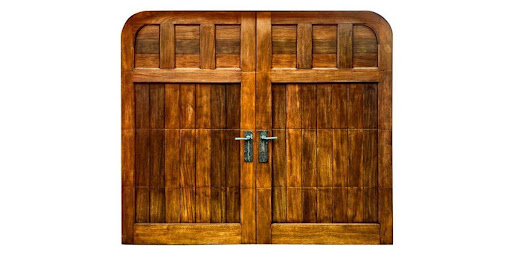Power Articles
Industry Elevating Content
Sliding vs. Swinging Doors: Pros and Cons for Your Home Renovation

PowerArticles
April 8, 2024
When planning a home renovation, choosing the right door style is a crucial decision that impacts both functionality and aesthetics. Two popular options are sliding doors and swinging doors, each with its own set of advantages and disadvantages. Understanding these pros and cons can help homeowners and exterior home remodeling companies make an informed choice that aligns with their specific needs and preferences.
Sliding Doors
Pros of Sliding Doors
- Space-saving design: Sliding doors glide horizontally on tracks, eliminating the need for swing space. This makes them an excellent choice for smaller rooms or areas where traditional swinging doors would be impractical.
- Unobstructed views and natural light: Large glass panels in sliding doors provide unobstructed views and allow ample natural light to enter, creating an airy and open atmosphere.
- Easy operation: Sliding doors are easy to operate, making them a convenient option for individuals with mobility challenges or those carrying heavy loads.
- Modern and sleek appearance: Sliding doors offer a modern and sleek appearance that complements contemporary home designs.
Cons of Sliding Doors
- Limited ventilation when closed: When closed, sliding doors may limit ventilation, which can be a concern in warm climates.
- Potential for track issues and maintenance: The tracks on which sliding doors operate are prone to wear and tear over time, potentially leading to maintenance issues or even jamming.
- Security concerns if not properly installed: If not installed correctly, sliding doors may pose security concerns due to potential vulnerabilities in the locking mechanism.

Swinging Doors
Pros of Swinging Doors
- Traditional and classic look: Swinging doors, also known as hinged doors, offer a traditional and classic appearance that can complement various home styles.
- Better insulation and energy efficiency: When properly installed and sealed, swinging doors can effectively prevent drafts and maintain indoor temperatures, potentially reducing energy costs.
- Variety of locking options for enhanced security: Swinging doors offer a variety of locking options, from simple latches to advanced locking mechanisms, enhancing security and providing peace of mind for homeowners.
- Easy to open and close: Swinging doors are easy to open and close, making them a convenient choice for high-traffic areas.
Cons of Swinging Doors
- Require more space for operation: Swinging doors require more space for their opening radius, which can be a limitation in smaller spaces or areas with limited clearance.
- Potential for sagging or squeaking over time: Over time, the hinges on swinging doors may become loose or squeaky, requiring periodic maintenance or adjustments.
- Limited natural light and views: Compared to sliding doors, swinging doors typically have smaller glass panels, limiting natural light and views.

Factors to Consider
Space Availability
One of the primary factors to consider when choosing between sliding and swinging doors is the available space. Sliding doors are an excellent choice for smaller rooms or areas with limited clearance, as they do not require swing space. Swinging doors, on the other hand, require more space for their opening radius, making them better suited for larger areas.
Desired Aesthetic and Style
The desired aesthetic and style of the home should also be taken into account. Sliding doors offer a modern and sleek appearance while swinging doors provide a more traditional and classic look. Homeowners should consider which style aligns better with the overall design of their home.
Ventilation and Natural Light Needs
If natural light and ventilation are priorities, sliding doors may be the better option. Their large glass panels allow for ample natural light and can be opened to provide ventilation. Swinging doors, on the other hand, typically have smaller glass panels, limiting natural light and ventilation.
Security and Energy Efficiency Requirements
For homeowners concerned about security, swinging doors offer a variety of locking options, from simple latches to advanced locking mechanisms. Additionally, properly installed and sealed swinging doors can provide better insulation and energy efficiency, potentially reducing energy costs.

Installation and Maintenance
Sliding Doors
Proper installation is crucial for the smooth operation of sliding doors. This includes ensuring that the tracks are level and aligned correctly. Regular cleaning and lubrication of the tracks can help prevent jamming or sticking.
Swinging Doors
A sturdy frame and proper hinge installation are essential for swinging doors. Over time, the hinges may become loose or squeaky, requiring periodic maintenance and adjustments to ensure smooth operation.
Customization Options
Materials
Both sliding and swinging doors can be customized with various materials, including wood, glass, and metal. The choice of material can impact the doors’ overall aesthetic, durability, and energy efficiency.
Finishes and Colors
Homeowners can also choose from a wide range of finishes and colors to complement the style of their home. This includes stains, paints, and even decorative glass options for sliding doors.
Glass Types
For sliding doors, different glass types can be selected to meet specific needs. Tinted glass can provide privacy and reduce glare, while frosted glass can add a decorative touch. Energy-efficient glass options can also help improve insulation and reduce energy costs.

Conclusion
When it comes to choosing between sliding and swinging doors for a home renovation, there is no one-size-fits-all solution. Both options have their unique advantages and disadvantages, and the decision should be based on careful consideration of specific needs and preferences.
Factors such as space availability, desired aesthetics, ventilation requirements, and security concerns should all be taken into account. Additionally, proper installation and maintenance are crucial for ensuring the longevity and smooth operation of both sliding and swinging doors.
Homeowners and exterior home remodeling companies should carefully evaluate these factors and consult with professionals to make an informed decision that aligns with their goals and budget. By considering all aspects, homeowners can create a functional and visually appealing space that meets their needs.
Published By
PowerArticles
April 8, 2024